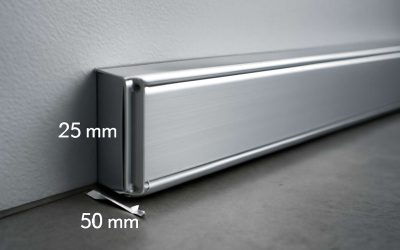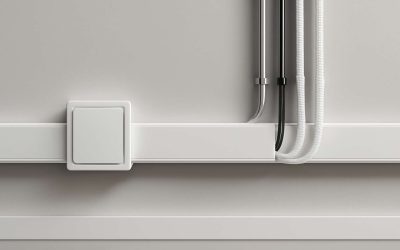
Electrical trunking is a system of protective conduit that enables current to be carried safely between multiple devices and terminals. It’s often used in areas of high risk or potential environmental damage to prevent the spread of fire and electricity, or where there are a lot of different circuits needing to be connected.
Wires are vulnerable to knocks, cuts and general damage that can lead to electrical tripping and other serious problems, particularly where they are not protected by cable management systems like trunking or conduit. This makes it important to protect wires as much as possible in homes and workplaces.
Electric trunking comes in a variety of materials, including plastic and metal. The material is determined by the needs of the installation and the degree of protection it requires.
Using the right type of trunking is crucial for protecting cables from water and moisture. It also helps keep them safe from other elements, such as salts and chemicals that can make them corrode quickly.
A good electrical trunking installation will allow you to run wires in a tidy, organised fashion that makes wiring easier for you to access when needed. It can also provide you with extra space when running cables that need to be hidden, such as in the kitchen or a bathroom.
If you’re running your wires in a confined space, it’s vital to use the right type of trunking and ensure it has sufficient insulation to prevent moisture or condensation from forming on the inside of the trunking. Moreover, it’s essential to keep your wires completely covered when they are not in use, as water can conduct electricity.
Installing electrical trunking can be a relatively simple job, especially when you use self-adhesive or snap-fit styles. But if you want to avoid damage or potential accidents, consider hiring a professional to complete the installation for you.
Before you start installing your trunking, it’s a good idea to plan where you want it to go and to take measurements. Then, you can order the right size and shape of trunking to fit your area.
Then, you can attach the trunking to the wall or skirting board with a suitable adhesive. Once you’ve done that, you can start running your cables through the trunking.
You may find it helpful to use a measuring tape when you’re installing your trunking to check the dimensions are correct and that the walls are free of any obstructions. You can also try using a stud finder (wall scanner) to find the correct studs in the wall for your trunking.
When you’re working with trunking, it’s a good rule of thumb to always work from the bottom up and to avoid using the lid when working on or around live conductors. This is because it can be dangerous for those working on or around a live wire when the lid is open, and will increase the risk of electrocution.
If you’re planning on working with trunking and you’re not sure which kind to choose, contact an electrician who will be able to recommend the best option for your situation. They can also show you how to work safely with the trunking so you’re not putting yourself at risk.



0 Comments